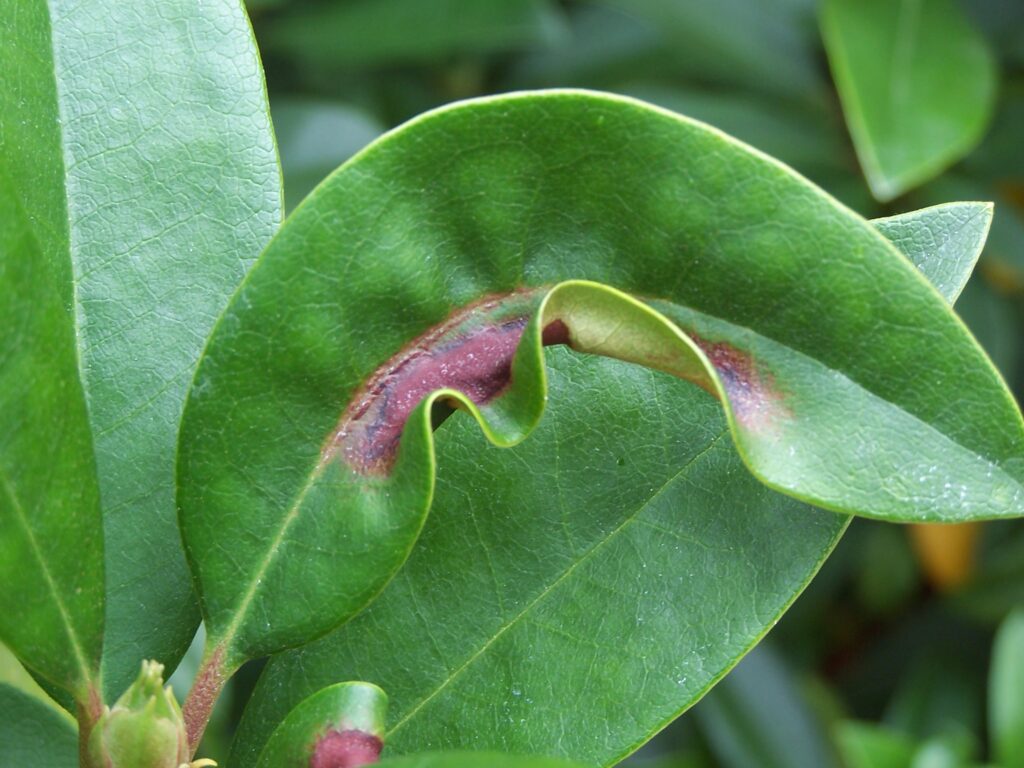
I’d intended to write the column earlier in the year, but it’s as relevant now as it was in the spring. This post will familiarize you with how unseasonable weather can affect your plants. Though I’ll be focusing on my own location in Tacoma, the phenomena are global. You just have to pay attention to what happened last week, last month, last year in your own location.
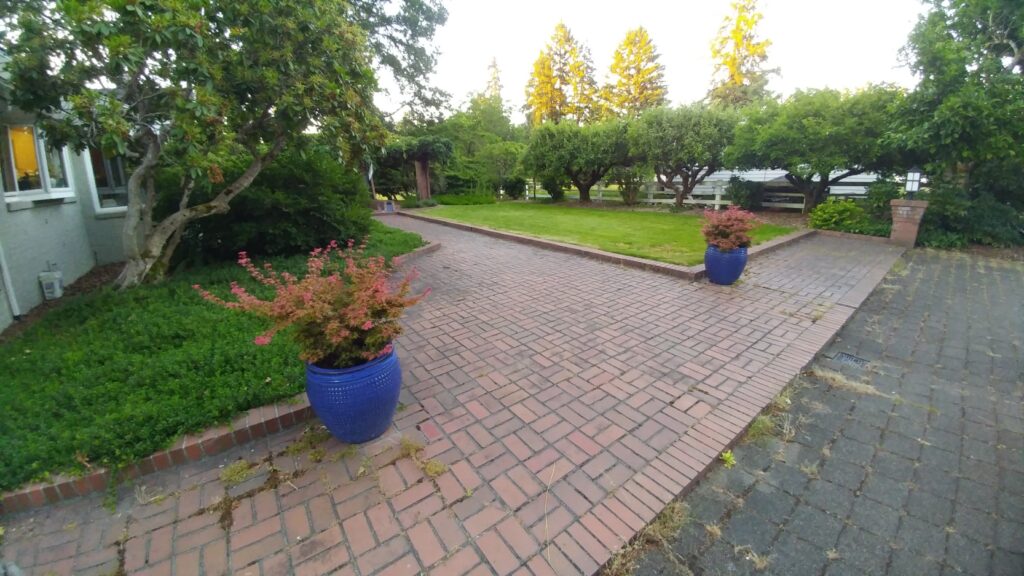
Our spring started out wet and cool, which is nothing new. But it was REALLY wet and REALLY cool compared to normal. This meant that our trees and shrubs had plenty of water to fill their expanding leaves and blossoms – but the lower than normal temperatures affected leaf growth. These dwarf Japanese maples had lots of leaves, but they were tiny! And they stayed that way, because once the leaves begin to lay down cuticle, they don’t expand any longer, even when it gets warmer. These maples put on a second flush of growth in the summer. Look at the difference in leaf size, determined solely by ambient temperature.
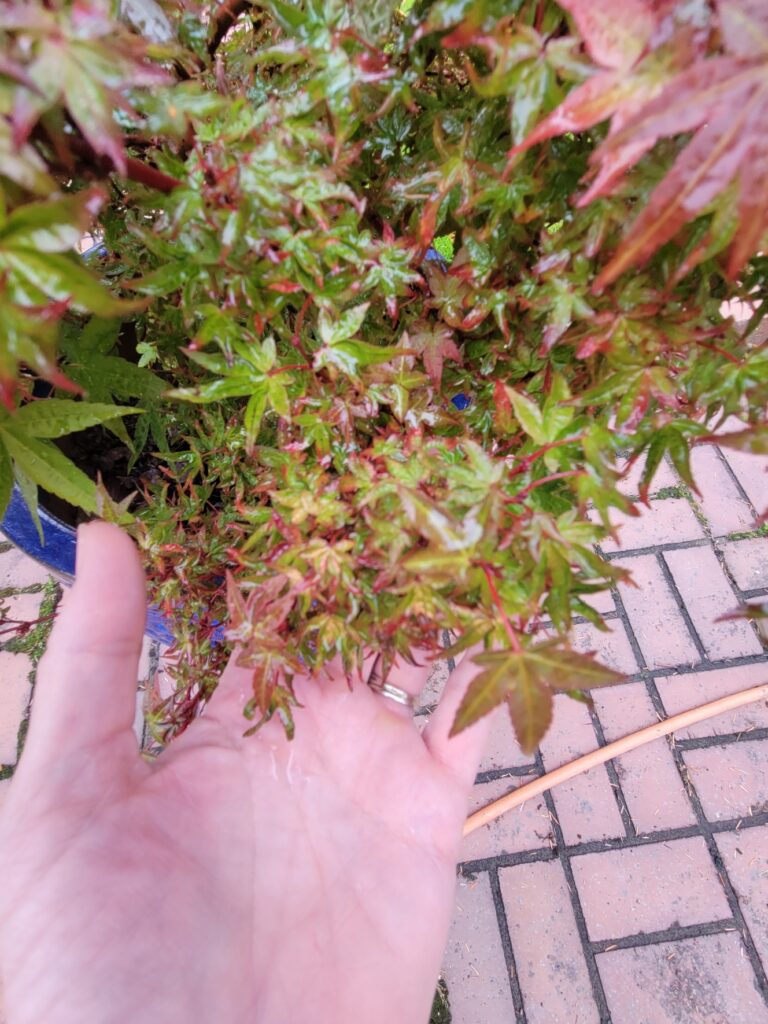
Small spring leaves 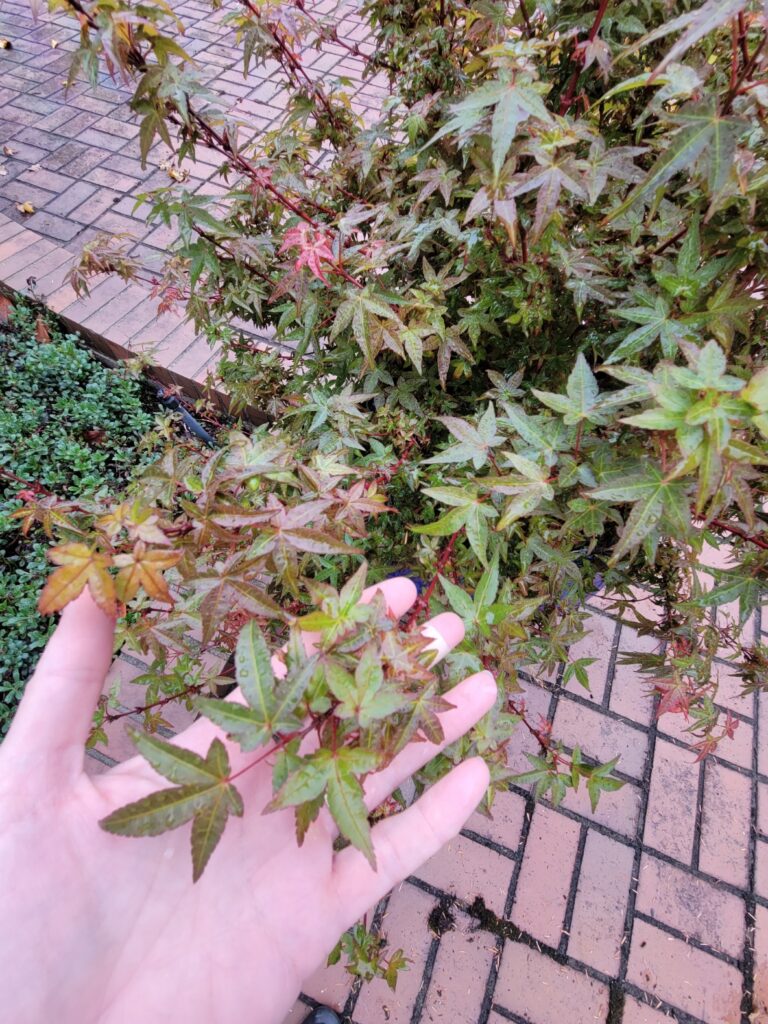
Large summer leaves 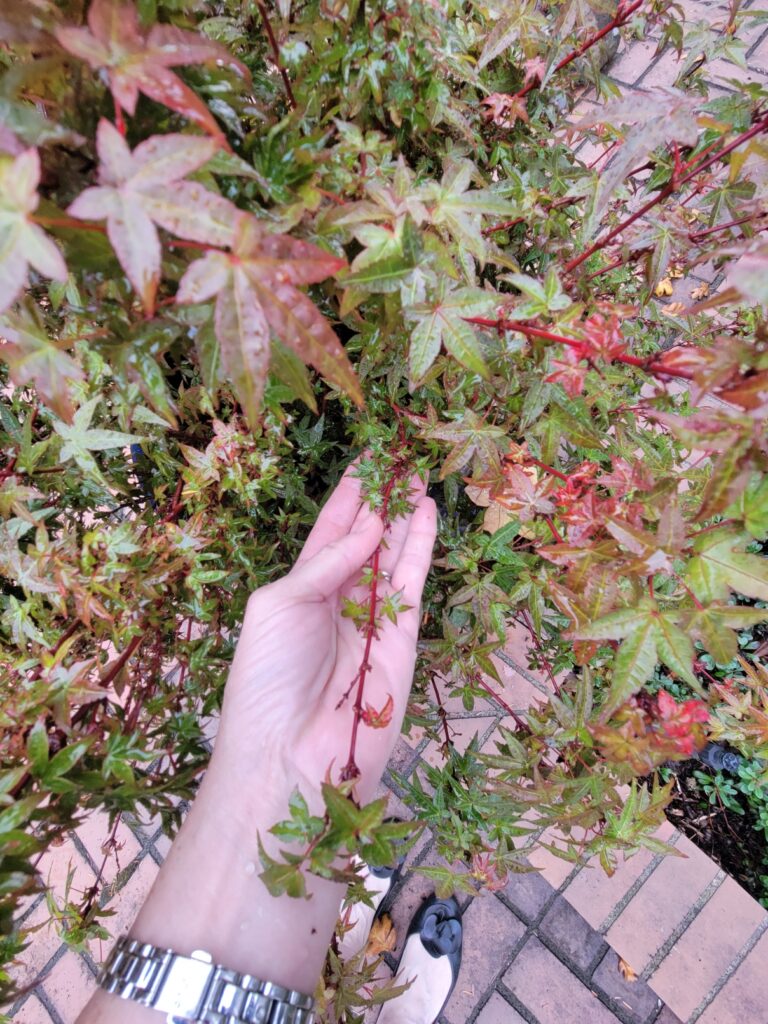
One year’s growth on a branch
We had an abundance of flowers on our fruit trees – so dense that I put off pruning some of our heritage apple trees so we could get an even bigger crop (our black Angus love apples). But summer rolled around and…virtually no apples on ANY of the trees. What happened?
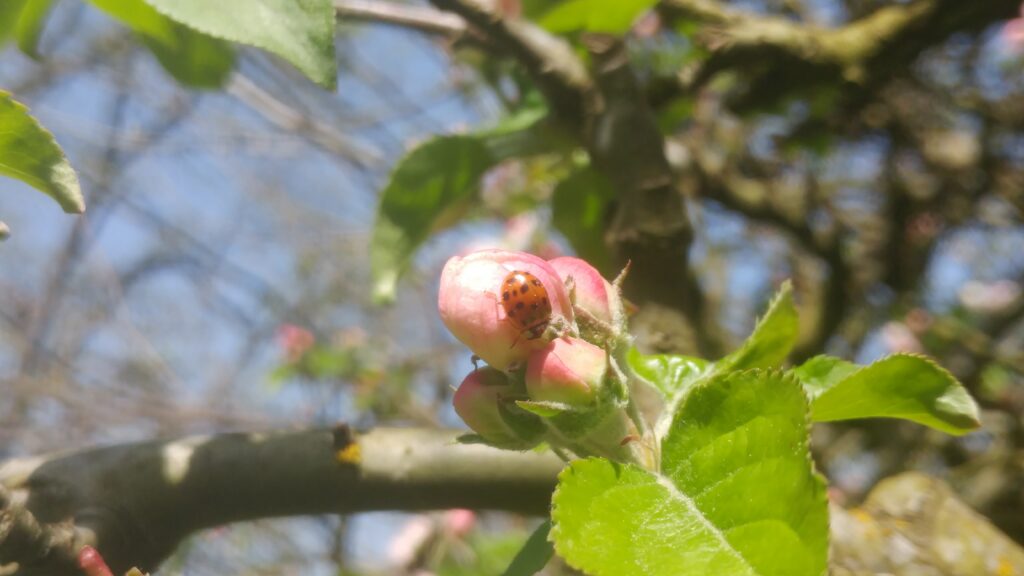
Well, that cool spring ensured that most of our pollinators were late to emerge from overwintering. I had wondered about them in the spring, as I could only see a few pollinating flies and no bees. But sure enough, we had almost zero pollination. No apples this year. Next year if the weather is similar I’m going to try using my battery-powered leaf blower to pollinate these trees. I’ll take pictures.
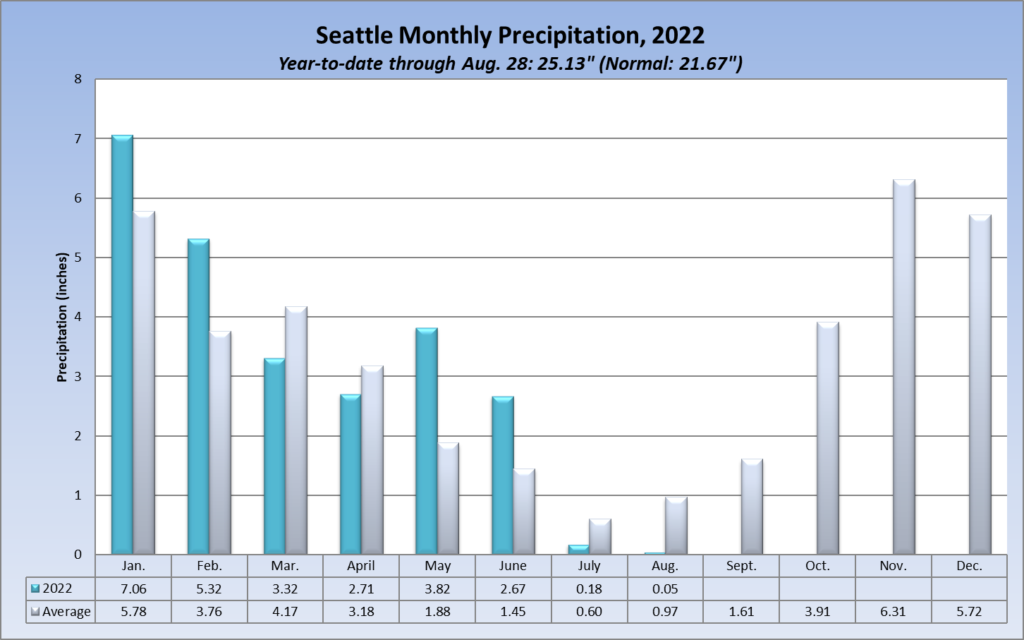
Fast forward to summer – for us, a record-breaking drought (again). Our temperatures weren’t as high as last year, but we still had very hot weather and no rain. For our landscape it’s not a problem, as we have well water for irrigation. But those gardeners who have little or no supplemental irrigation may very well find that their woody plants and perennials don’t perform very well next year: perhaps fewer flowers or branch dieback will appear. This is due to root dieback that happened all summer in unirrigated conditions. The damage is only seen in the following spring, when there aren’t enough roots to supply water to emerging buds.
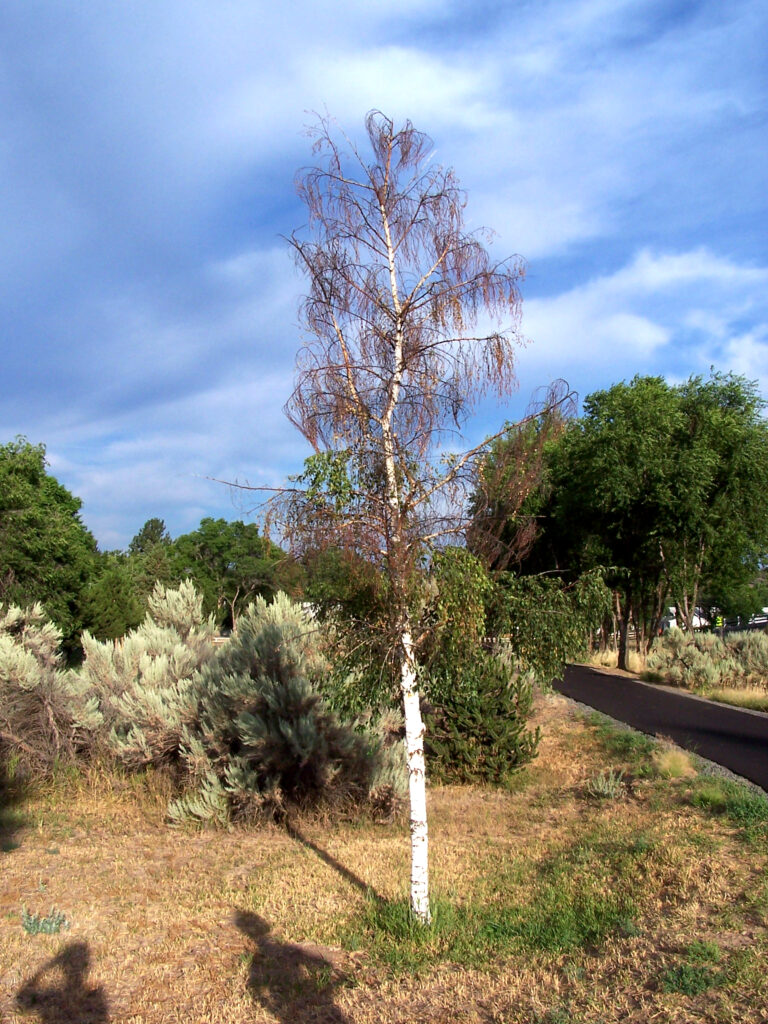
Being able to predict the impact of specific weather events on your landscape plants is key to avoiding misdiagnosis and subsequent misuse pesticides or fertilizer in a futile attempt to rescue them.
Oh, and if you are wondering about the photo at the top, you’ll have to look at a post from 2009 to see what’s going on.
I looked at the post from 2009 to see what was going on in the first photo of the current article. I read: So what caused this damage? Explanations on Monday!
Besides that tantilizing promise, all other explanations were contained in 4 comments.
So – I’m still very curious what caused the leaf damage in the first photo today.
For that tidbit, you will have to go the the posts in 2009 (left menu) and find the Monday one that follows the Friday puzzle. But if you don’t want to go hunting I’ll tell you it was from unseasonally high temperatures during leaf expansion, causing water loss and tissue death in the leaf at that point.
Crown dieback from water stress or tunneling out of upper crown by bronze birch borer?
Water stress. This is my photo. There was no evidence of pests or disease. Tree decline is generally due to abiotic stress (with the exception being with new amd aggreessive biotic agents).
What wonderful posts you write! Thank you!!!